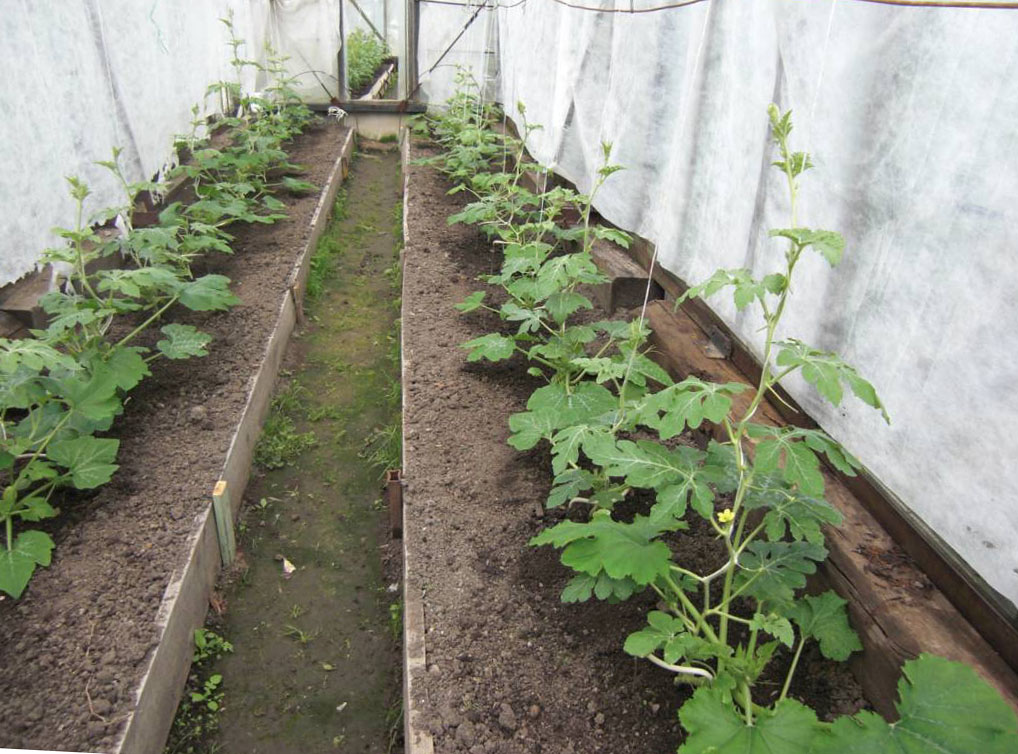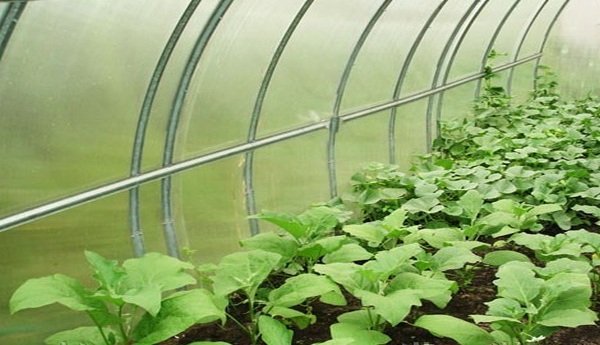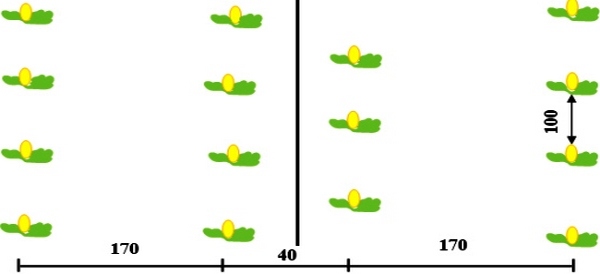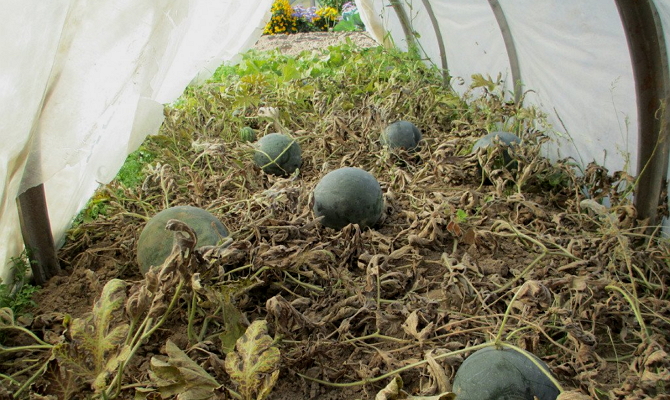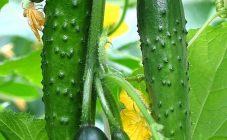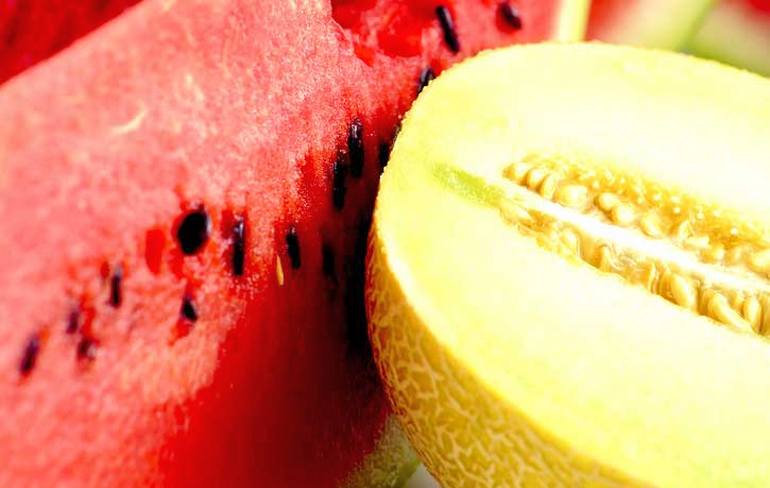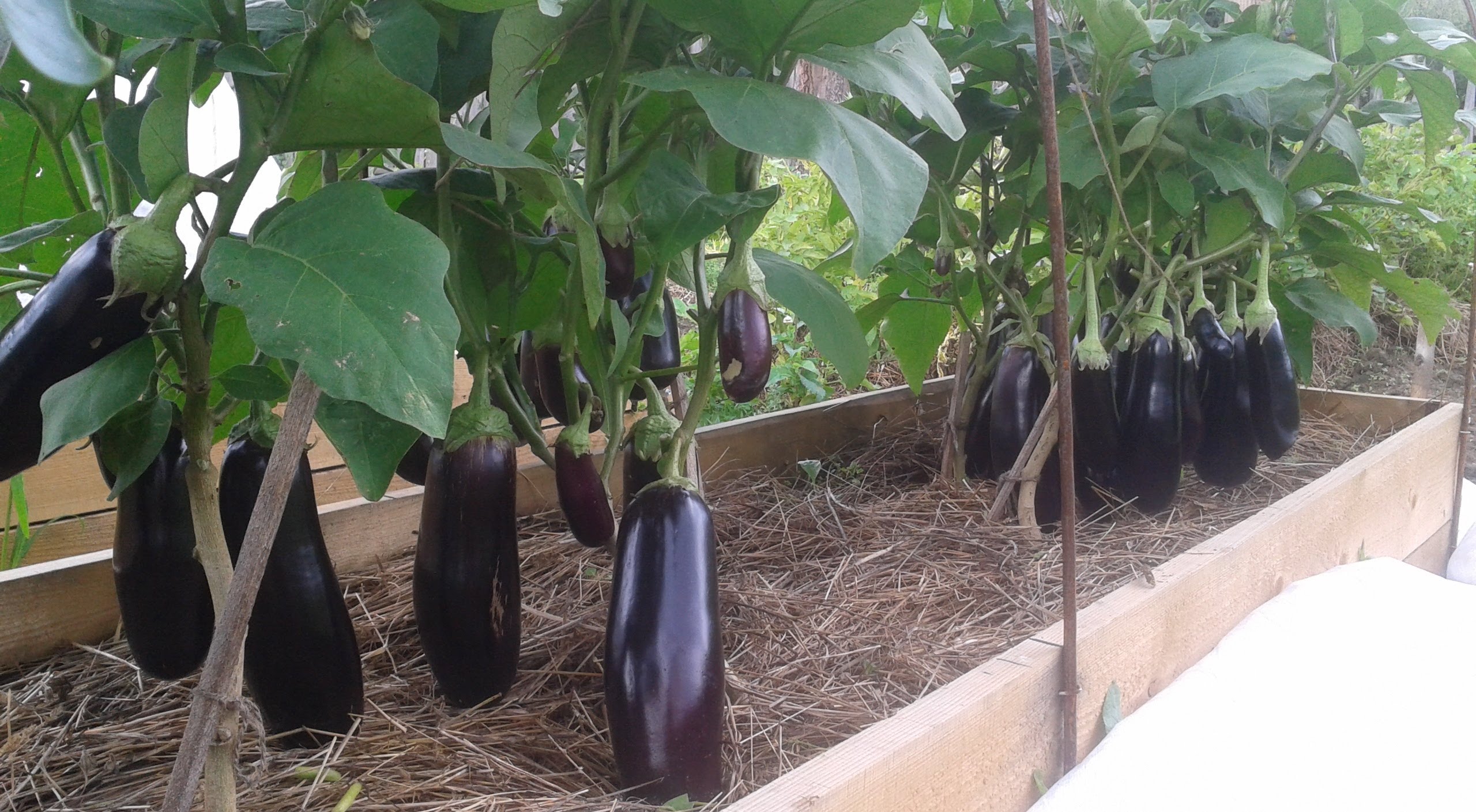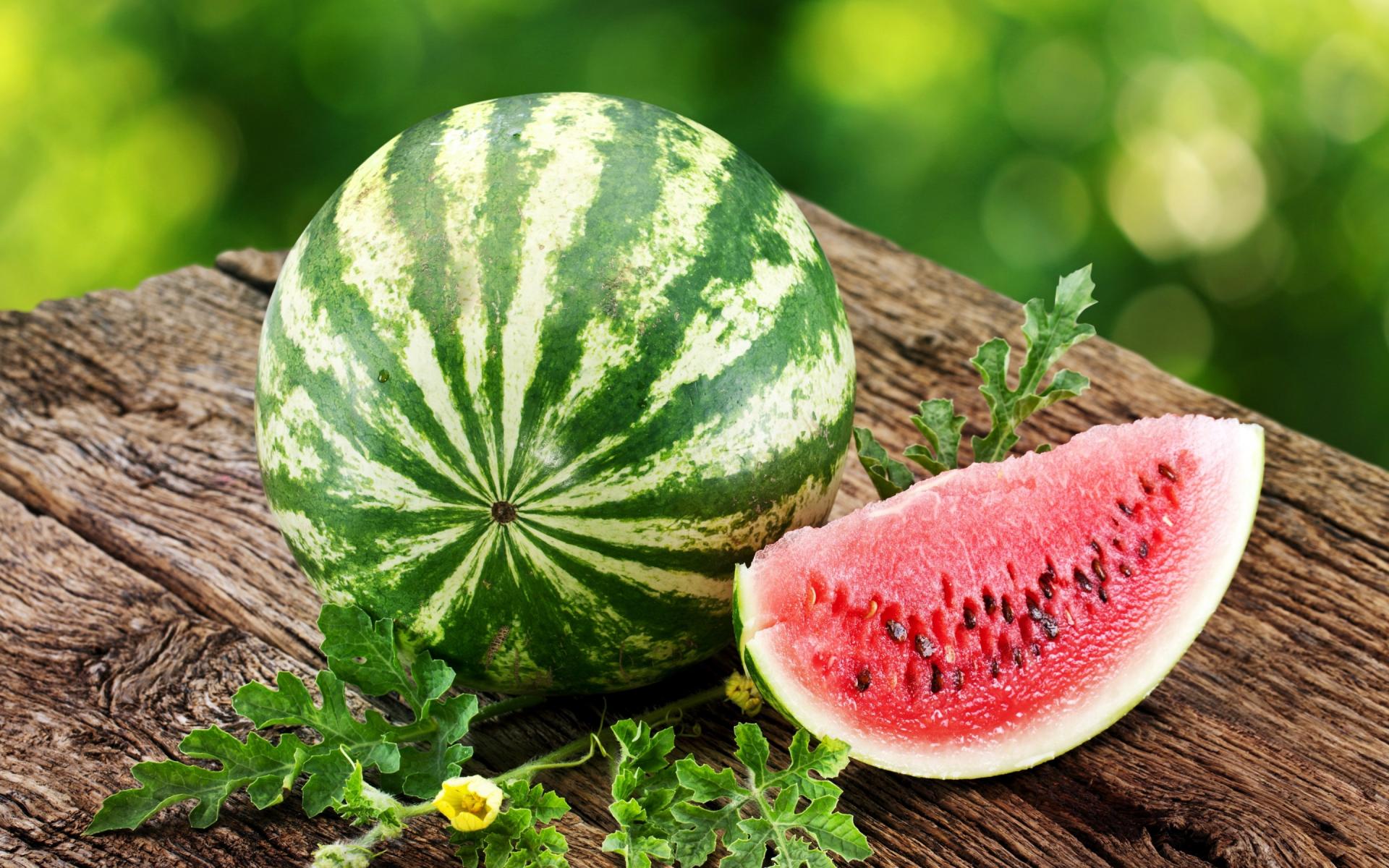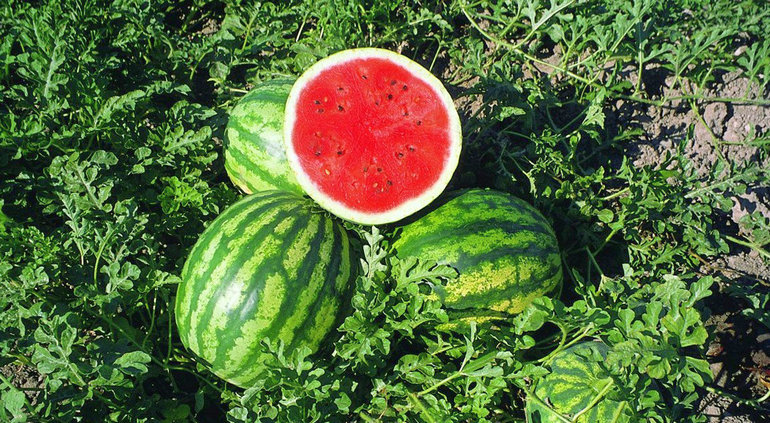Content:
Delicious and healthy watermelons, striking in their size, are grown in the south of the country. But the inhabitants of the northern regions, having learned about the unpretentiousness of the culture, grow watermelons in a polycarbonate greenhouse, planting and caring for them is not as difficult as it might seem.
Agrotechnics
Watermelon - the largest berry, grows in the southern regions, where there are quite hot sunny days.
However, for many years experienced gardeners have been dealing with the question of how to grow watermelons and melons in a greenhouse at a dacha, not only in the Moscow region, but also in the north, in areas with short summers: in the Leningrad and Murmansk regions, in the Urals, in Siberia, Transbaikalia.
For this, a new agricultural technique has been developed, which includes:
- choice for sowing seeds of early varieties (for example, Ogonyok);
- growing seedlings;
- correct planting in the greenhouse;
- compliance with growing conditions in the greenhouse (soil preparation, maintaining temperature, humidity at the required level);
- a limited number of fruits on the bush;
- competent care of plants in the greenhouse.
Plants need comprehensive care, including the following mandatory activities:
- watering;
- top dressing;
- pinching shoots and removing lashes;
- garter bushes;
- manual pollination.
Proper soil preparation is one of the main conditions for the successful cultivation of a sweet dessert. The best option would be autumn preparation, when, during digging, rotted manure up to 20 kg per 1 sq. m and cut green manure plants (for example, mustard).
River sand is added to the soil at the rate of 1 bucket per 1 sq. m, mineral fertilizers (nitrophoska, superphosphate) 10 g per 1 sq. m. The acidity of the soil should be (6 - 7) pH. Lime must be added to acidic soil (0.7 kg / sq. M); 3 kg of manure or 9 kg of compost are added to alkaline to increase the acidity level by 1 pH unit.
During the spring preparation, the top layer of the earth is removed to the depth of the shovel, a layer of hay with humus is laid, sprinkled with nitrogen fertilizers. Then poured abundantly with water. The selected soil is laid on top of the resulting layer, covering the bed with a black film to warm the earth.
High air humidity in the greenhouse and the formation of condensation on its surface are not allowed, this leads to the appearance of mold, plant disease and contributes to the reproduction of insect pests.
To exclude such phenomena, the greenhouse is ventilated.
Watermelon is a light-loving crop, which is why a greenhouse made of polycarbonate, a material with high light permeability, is the best option for growing it.
When planting seedlings, they choose places near the walls of the greenhouse, where there is more light and nothing will shade it.
How to plant and grow watermelons in a greenhouse
Watermelon seedlings are transferred to the greenhouse when the weather is warm. At daytime temperatures not lower than +25 ºC, at night at + 5ºC, when the soil in the greenhouse at a depth of 10 cm warms up to +18 ºC, seedlings are planted.
For seedlings, holes are harvested, watered with water heated in the sun.In one hole, carefully, trying not to damage the roots and stem, plant two seedlings with a lump of earth, placing it 1 cm above the ground level to prevent root decay.
The beds for watermelon and melon are placed in the most illuminated places along the walls, excluding the neighborhood of tall plants that create shade for melons.
To get sweet watermelons in a polycarbonate greenhouse, planting and caring for them must be carried out according to all the rules.
For the first week, the plants are not touched, ventilating the greenhouse if the air temperature inside reaches +30 ºC. Watered with warm water, while adding nitrogen fertilizers and making sure that water does not fall on the leaves.
When grown in a greenhouse, it is possible to take care of the greenhouse by tying the stems to the trellis. This allows the seedlings to be planted denser.
In order for the fruit to grow and mature, it is necessary to correctly form the bush and normalize the number of fruits on it. Cultivation in one stem is more often used: the main lash is directed upwards, securing it with a rope.
The garter is started 10 to 12 days after planting. The growing lash is tied to pre-installed trellises. The formation of the bush is carried out by pinching, removing all secondary branches, leaving the main whip on which the fruits will tie.
After the appearance of 3 - 6 fruits (the number depends on the variety), the lashes are cut above the ovary, leaving a few leaves.
Once a week, the plants are inspected, removing the appearing side stepchildren.
To protect against insect pests such as spider mites, plants are treated with Fitoverm.
In order to prevent diseases, spraying with colloidal sulfur is carried out, which protects the melon crop from ticks and fungi. A good result is obtained by prophylactic treatment at all growth periods with "Fitosporin", which is safe for humans.
If the weather is cold and rainy, you need to heat the greenhouse and turn on the lamps (sodium or LED) for additional highlighting of the plants.
The number of ripe watermelons depends on the climatic conditions of the region. Many amateur vegetable growers are interested in how to grow watermelons in Siberia in a greenhouse. In Siberia, this is achieved by leaving one lash with one ovary, as a result, getting one watermelon up to 10 kg. And in the south of the country - (2 - 3) pieces on a bush.
When growing small-fruited varieties, the number of ovaries left for ripening is greater.
Planting scheme for seedlings of watermelons and melons in a greenhouse
Before planting seedlings, prepare beds with a width of at least 90 cm over the entire length of the greenhouse, up to 20 cm high.A comb 50 cm wide and 18 - 20 cm high is formed along the bed.It is advisable to place the beds in a strip along the walls of the greenhouse, where the maximum lighting is. For protection from the hot sun, it is recommended to sow "curtain" plants nearby (climbing beans, peas).
Seedlings are planted in two ways:
- one-line outline - in one row, with a distance between plants (40 - 50) cm;
- two-line diagram - in a checkerboard pattern, the distance between plants in a row is at least 70 cm.
One-line is more often used in small greenhouses. The dimensions shown are optimal.
Water the seedlings three times a week, using a drip method or under the root. Do this in the evening using water heated by the sun, avoiding contact with the leaves. Enough 7 liters per plant.
Arrange the ventilation of the greenhouse to prevent the appearance of condensation and stagnation of air, which can lead to the appearance of insect pests and infection of plants with fungal diseases.
Watering is abandoned when the size of the fruit reaches the size characteristic of the cultivated variety.
A strong wire is pulled over the beds and trellises are made.
Watermelon is a climbing plant, but its stem is unable to cling to a vertically fixed rope. Therefore, you need to constantly inspect the beds and twine the growing whip around the trellis, performing turns in a clockwise direction. Attach the lash to the trellis at the level of the second - third sheet.
Flowers appear approximately 60 days after transplanting. The first to bloom are males, they are larger and there is no ovary on them, and then females. At this time, you need to carry out the pollination procedure, performing it manually due to the absence of bees. The best time is 10 - 12 o'clock in the morning, when the flowers are at their maximum. This must be done quickly, since after a few hours the male flowers will crumble, the female flowers retain the ability to pollinate for three days.
You can carefully use a cotton swab to transfer pollen from a male flower to a female one, or, gently picking off a male flower, lean it against the pistil of a female flower with its stamens, for reliability, repeat touching one flower several times.
Successful pollination will be confirmed in 1 - 2 days by the rapid development of the ovary.
In a greenhouse, watermelons are often formed into one stem, that is, the ovaries are left on the main shoot, the rest must be removed. The number of ovaries is regulated depending on the expected size of the fetus.
After making sure that the ovaries have begun to grow, when they reach the size of a walnut, they pinch off the top of the shoot, retreating a few leaves up.
For normal ripening, you need to turn the fruit, exposing different sides to the sun.
To exclude the delay in the ripening of watermelons, it is necessary to regularly remove the appearing stepsons.
Weed removal is another condition for the successful cultivation of melons and gourds.
The presence of a glossy bark with a distinct bright pattern and a shrunken stalk will indicate the ripening of the berry.
With what you can plant watermelons in a greenhouse
Due to the small area of greenhouses, they are trying to combine the cultivation of watermelons with other vegetables. Which of them do not interfere with the growth of a watermelon and perfectly coexist with it?
Melon is the closest relative, belongs to the pumpkin family. They can be planted side by side.
Vegetables with similar growing conditions are suitable for "neighbors":
- a tomato;
- eggplant;
- bell pepper.
Other drought-resistant plants grow well nearby.
Melons and gourds do not tolerate high air humidity and the presence of drafts. They rot if the relative humidity exceeds 60%.
Cucumbers are a moisture-loving culture, they require a lot of water and need constant ventilation, they are planted in the opposite part of the greenhouse. Create conditions with ventilation and proper watering.
Watermelons are given a dry, draft-free corner.
Before planting watermelon seedlings in early spring, you can grow and harvest radishes and greens that will not harm the future planting of watermelons.
Fertilizing watermelons in the greenhouse
After three weeks after planting the seedlings, the first feeding is carried out. By this time, the lashes grow up to 25 cm in length. The second time the plants are fertilized before the flowers appear. The third feeding is necessary during the formation of ovaries.
The best fertilizer is ammonium nitrate, diluted in water, (15 - 20) g is taken per 10 liters of water. Two liters of solution is sufficient for one well. Plants can be watered with this solution every ten days.
Once a month, they are fed with complex mineral fertilizers.
The sweet taste of the fruit is given by wood ash, which is considered the main feeding of melons and gourds.
Fertilization is abandoned when the fruits begin to ripen.
The information provided makes it possible to get acquainted with the instructions for growing melons and gourds, such as watermelons and melons, in a polycarbonate greenhouse, to get advice on planting and care.
The cultivation of watermelons in Siberia in a greenhouse became possible with the advent of early maturing varieties. Everyone's favorite Ogonyok variety is grown in Siberia and the Far East, fruits up to 1.5 kg in weight ripen in 75 - 85 days.
Sibiryak-97 is a variety of the Ural breeders, it can withstand temperatures down to −6 ºC, and reaches a weight of 4 - 5 kg. The fruit is thin, has a sweet crumbly pulp.
As an experiment, a 15 kg watermelon was grown in Udmurtia and grafted onto a pumpkin root.

